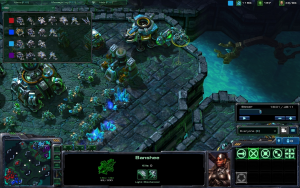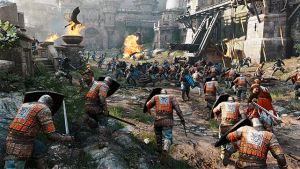There has been a growing debate when it comes to accessibility in competitive games. As companies try to make their titles more accommodating and welcoming to new players, hardcore players see this as a way of dumbing down what they have mastered. Where you fall on the debate will come down to your thoughts on the two learning curves that drive any sport.
The Road to Mastery:
There are two barriers of entry when it comes to learning anything at the competitive level. The first group is technical elements. The technical side represents the standardized elements that go into participating. Some examples would be learning how pieces move in Chess, having golf clubs for Golf, a car that meets the requirements for drag racing and so on.
The technical curve is something that is universal for anyone to be able to do that specific sport. Technical elements are not transferable to different activities.
The second group represents the player or participant’s mastery. These skills are more abstract and are based on the person’s own ability. Some examples would be: Reading the fairway in Golf, understanding how to control your car at high speeds in a race, being able to read and react to your opponent in a fighting game and so on.
Player mastery elements are not something that you immediately know; they come from constantly practicing and growing your knowledge. When someone plays a CCG, they’re not going to immediately know how to build effective decks; that comes with time.
Depending on the sport or game in question, one of these two will be considered the greater factor. Where our accessibility debate comes in is on which group should be more important.
The Stuff Winners are made out of:
When it comes to learning anything, the more barriers of entry standing in the way, the less likely for someone to want to try and get into it. Competitive games tend to focus on the technical barriers and they’ve become a badge of honor for the esports community. Titles like Starcraft and Street Fighter have technical elements that make them harder to learn.
Starcraft’s UI requires a lot of micromanagement on the player’s part to be used effectively. Street Fighter 5 has the different special move commands and the individual character combos to learn. It would be easy to change things to make them easier to learn, but the hardcore don’t want that.
A general sentiment from expert players is that if you reduce the barriers of entry to play competitively, it will be harder for competitive players to stand out. Another point was that if the game is too easy to learn, then it won’t hold someone’s attention.
I feel that if a game is too hard to get into, then someone is not going to even try to make sense out of it if they’re being overloaded.
When it comes to this debate the question remains: What do you think is the bigger factor in mastering a game — The technical side or the player side?
Growing Out:
The competitive/Esports community faces a tough choice: Do they want their communities to grow or remain stagnant? Established genres like fighting, MOBA and RTS have hit their respective peaks over the years. At this point, people know what Street Fighter, League of Legends and Starcraft are.
Likewise, the respective communities have become firmly established and it’s unlikely for them to get any more boosts. Personally, I think technical barriers should not be the point of learning a game/sport.
Skateboarding for instance has one of the lowest technical barriers out there — You just need a skateboard. Once you have that, it then falls on you to improve if you want to be able to skate professionally.
I would love to see more competitive games embrace the easy to understand nature of titles like Smash Brothers and For Honor. It’s hard to predict what will become the next big esports craze. As a developer, you don’t want to start off on the wrong foot with a game that only a select few will learn and play it.
Not everyone is going to become the next esports star, but you don’t want to have unnecessary barriers getting in their way.




